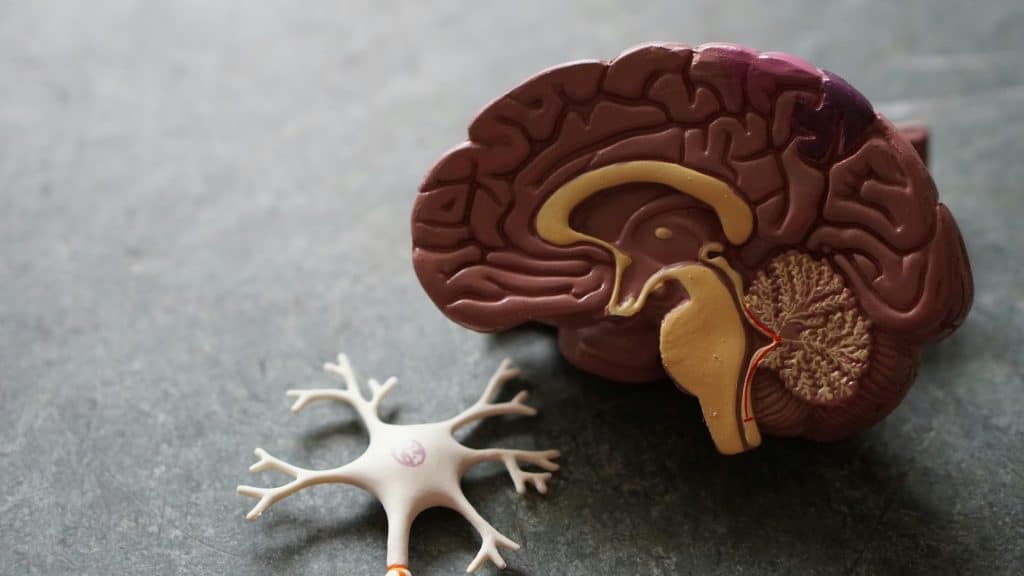This article originally appeared in The Skeptic, Volume 6, Issue 2, from 1992.
Those who ply their trade in the market place of unorthodox remedies and practices have an ambivalent attitude to science. Their reluctance to expose their notions and products to scientific examination, and their not-infrequent insistence that these are beyond such scrutiny, are commonly equalled by their keenness to promote them by reference to ideas and phenomena derived from or refined by science. Thus we have an industry of quasi-science whose entrepreneurs covet all the advantages of science, but none of its discipline. Maybe this has always been so, but in a paradoxical way the success and popularity of modern science and technology feed this industry, just as they do – quite legitimately – science fiction.
The inevitable outcome of this is that scientific concepts, phenomena and discoveries become extended beyond their range of validity or useful application, and even become endowed with almost magical properties. ‘Force’, ‘energy’, ‘vibrations’, ‘ field’, ‘magnetism’ and ‘gravity’ have long fallen victim to this kind of plundering. More recently we have witnessed the same with ‘vitamins’, ‘biorhythms’, ‘biofeedback’, ‘allergy’, ‘subliminal perception’, ‘alpha rhythm’, and the ‘right and left brain’. The latest scientific finding to be exploited in this way is ‘endorphins’. “It increases the body’s endorphins” is the claim of purveyors of the ‘flotation chamber’, a relaxation device in which the user floats blissfully in a tank of epsom salt solution.
The flotation chamber is one of a number of pieces of pseudo-scientific technology available from the anti-stress and ‘mind-bending’ industries. They are not quite New Age material because they are promoted on the basis, not of mysticism, but of scientific knowledge, albeit a misrepresentation of that knowledge.
Another example is the ‘Synchro-Energiser’, manufactured by Synchro-Tech of Cleveland, Ohio. Not only is it claimed that this device will assist the operator to achieve desirable states of tranquility, creativity and mental balance, but it is also presented as a panacea, curing phobias, improving sexual functioning, correcting learning difficulties, eliminating pain, boosting intelligence and so on. I should like to present an account of this device which I was asked to prepare not so long ago for the producers of a television documentary.
The Synchro-Energiser: a high-tech computer-driven brain balancer
From my reading of the information on this device, I understand that the operator wears a pair of goggles and a pair of earphones. He or she hears a series of sound pulses and observes a series of white light pulses. (In fact, repeated stimulation by white light pulses at low frequency may cause epileptic auras and convulsions in some susceptible people, and discotheque strobes are required to be set outside of these frequencies.)
In the Synchro-Energiser, the frequencies of both sets of pulses can be controlled and varied within a range of 1 to 60 per second and the two eyes and ears may be stimulated in various combinations (both eyes and both ears, left ear and left eye only, and so on). The blurb also speaks of an additional form of stimulation (‘light/sound and electromagnetic stimulation’). I have difficulty in understanding how the operator is experiencing this third type of stimulation. Light is, of course, electromagnetic energy of a particular wavelength and frequency to which the eye is sensitive. However, the blurb states that there is an electromagnetic field ‘heard separately through the goggles and the earphones’. Of course a person cannot hear through goggles, and the ears are responsive to vibrations and sound waves, which are not electromagnetic waves. None of this makes any sense.
The blurb informs us that certain mental states such as alert concentration, relaxation and sleep, are associated with certain bands of frequencies observed in the EEG recordings of the brain. Here, electrodes attached to the skull pick up the electrical activity of the brain and although the pattern of activity (the electroencephalogram or EEG) involves many different frequencies, the composition of these frequencies changes under different circumstances, including the mental state of the person. Four bands of frequencies have been identified as particularly significant and these have been designated by the Greek letters alpha, beta, gamma and delta. The distribution of these frequencies across the brain also changes according to the type of activity in which the person is engaged – speaking, visualising, performing arithmetical calculations, remembering, performing skilled tasks, sleeping, dreaming, and so on.
It is apparently assumed that visually and auditorally stimulating the brain to produce more of a particular band of frequency creates the kinds of mental states associated with those frequency bands. This is a complete fallacy. There is no one-to-one relationship between EEG frequency and mental state. For example, when a person relaxes, more alpha rhythm is detected in the EEG, but alpha rhythm may be abundant in the recordings of people who are far from relaxed, and a sizeable minority of people produce little or no alpha rhythm at all, yet have no problem in relaxing. An analogy is the relationship of anxiety and sweating: an anxious person sweats more, but you do not make a person anxious by causing him or her to sweat, say by increasing the room temperature.
All sorts of experiments have now been performed in training people in alpha production and the general finding seems to be that it is the expectancy of achieving a tranquil mental state which is the crucial factor rather than increasing alpha activity. If people are trained to suppress alpha but are informed that this will lead to a calm meditative state, they are as likely to report achieving that state as people likewise instructed to enhance their alpha. So there is nothing to suppose that receiving the kinds of stimulation produced by this device will have any special effect on the operator’s mind and state of consciousness, other than that produced by the expectation created by the information given in the instructions. Probably, alpha rhythm is linked to something like the relaxation of visual attentiveness which is associated with, but not necessarily dependent on, mental relaxation.
In addition to these fallacies regarding EEG rhythms, there are a number of blatant factual errors. For example, it is implied that stimulating the ears separately with sound is equivalent to stimulating the two sides of the brain separately. This is not so. The nerve fibres from each ear go to both sides of the left hemisphere. So it would be more accurate to talk about stimulating the two hemispheres by presenting stimuli in the two visual fields separately. However, since the information is passed to the other side of the brain in a fraction of a second, the whole idea is a nonstarter.

It must be remembered that although the upper part of the brain is divided into two halves, the two halves function as one unit and it can be demonstrated by monitoring the on-going activity of the brain, that whatever the brain is doing involves an integrated pattern of activity over the whole of the brain. It is true that when the brain is interfered with in some drastic way – such as temporarily deactivating one hemisphere by electro-convulsive therapy, or the injection of drugs, or severing the connections between the two sides, each hemisphere can be shown to have a particular way of functioning which, under these extraordinary circumstances, can proceed independently of the other hemisphere. However, in the intact brain, information received via the senses is distributed, processed and integrated by the whole brain. It is meaningless to talk about stimulating the two sides of the brain separately, and the current hype over left and right brain thinking (for example, developing your left and right brain) is largely misplaced and erroneous.
In addition to the above, the manufacturers claim that the machine will enable the user to achieve some impressive sounding state or condition which, with the benefit of a little thought and knowledge, can be seen to be meaningless. One example is ‘total awareness’. Another is ‘enhanced cognition’. We also have ‘mood equilibriation’ and ‘brain balancing’. The latter presumably has something to do with the later-mentioned notion of ‘most of your brain cells working in harmony’ and the ultimate claim of being able to ‘synchronise the entire nervous system’. None of these ideas has any basis in neurophysiology or neuropsychology; likewise ‘the ability to shift from left to right hemisphere whenever needed, ‘(integrated) right and left hemispheres’, ‘(weaving) to the left-right and front-back quadrants of the brain’, ‘a more comprehensive, scanning type of awareness’, ‘a balance between the visual and auditory… cortex’, something called ‘automatic receptivity for learning new subjects’, and ‘dipping into a body rhythm’. These ideas, though they sound impressive and extraordinary, have little or no meaning in neurophysiology or neuropsychology.
The manufacturers’ blurb also refers to scientific concepts which have little or no meaning in the context in which they occur. As mentioned above, they speak of the left and right sides of the brain, EEG rhythms (alpha, beta, and so on) and an electromagnetic field. We are told that as a result of the stimulation from the device, there is a following response elicited in the brain cells and this creates a ‘magnetic induction field’. We are also informed that the visual effects such as colours and shapes, produced by the light pulses, are a “psychedelic experience… influenced by what chemicals the brain secretes”. More likely they are examples of the commonly observed effects of white light on/off stimulation which, for example, results in different colours being seen.
You can see this effect if you observe the after-image of a bright light. You will see that it goes through a flight of colours as it gradually fades. Also, if you look at a rotating black and white disc you will see an interesting display of different colours. This phenomenon is caused by the different rates of fatigue and recovery of nerve cells which respond to different wavelengths of the light and thus give the experience of colour.
Conclusions
What principles are at work here? One of them, which interests me greatly, is the extension of ideas and methods beyond the range of their validity or demonstrated effectiveness. This commonly happens in medicine, whether mainstream or unorthodox, and other treatment systems such as psychological therapies. It may also be observed with methods of assessing or predicting human characteristics or behaviour.
Sometimes the range of validity will be minimal or non-existent. Astrology is a good example; ‘biorhythms’, subliminal perception and certain alternative medicines are others. Sometimes there is a range of valid application but the methods and ideas are extended beyond that. Biofeedback, graphology and mainstream medical remedies such as antibiotics, antidepressants and tranquillisers are examples of these.
The forces which determine the actual (as opposed to the theoretical) range of applications of ideas and procedures are complex and are such as to allow even completely invalid practices to flourish indefinitely (like astrology). Such forces include the needs (personal and financial) of the practitioner. I have discussed some of these thoughts elsewhere and I hope to pursue them at a later stage.



